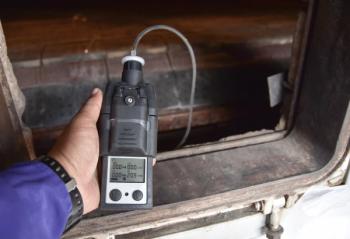
Whale Optimization Algorithm Automates Spectroscopic Ellipsometry
Research led by Changcai Cui have developed a whale optimization algorithm (WOA) to improve the accuracy, efficiency, and automation of spectroscopic ellipsometry data fitting, enabling precise measurements of film thickness and refractive index.
In a recent study published in Photonics, a multidisciplinary team, comprised of researchers from Huaqiao University, China Jiliang University, the National University of Singapore, and the University of Huddersfield, showcased a novel approach to improve the accuracy and efficiency of spectroscopic ellipsometry (SE) data fitting (1).
SE is a sensitive technique for measuring thin and ultra-thin films, providing precise data on film thickness, uniformity, dielectric properties, and optical constants, even for films thinner than a single atomic layer (2). It is routinely used with metals, but any semi-solid or solid sample can be measured using SE (2). SE can be performed in situ or ex situ, and it is used in various applications (3).
In this study, led by Changcai Cui of China Jiliang University, the team used the whale optimization algorithm (WOA) can enhance the accuracy and efficiency of SE data fitting. The WOA, a computational algorithm inspired by whales and their social hunting behavior, can align experimental and model data, which helps make the analysis more reliable (1). This research focused on determining the thickness and refractive index of tin oxide (SnO₂) films, which are widely used in optical and electronic applications (1). SE is a powerful non-destructive technique used to measure these parameters, but traditional data-fitting methods often rely on initial parameter guesses, potentially introducing bias or inaccuracies (1).
WOA was used to analyze SnO₂ films with a transparent wavelength range of 400–800 nm. The algorithm successfully aligned the Psi (Ψ) and Delta (Δ) parameter curves obtained experimentally with those generated by the model (1). The researchers were able to show that this alignment improved on the accuracy that conventional methods had, including the widely used Levenberg–Marquardt (LM) algorithm (1).
The results showed that the thickness and refractive index values derived from WOA fitting were in close agreement with those obtained using the LM algorithm. The validation underscores the potential of the WOA in ellipsometry data fitting, particularly for transparent films like SnO₂ (1).
The researchers demonstrated some of the best features of the WOA in their study. One of them is that WOA is independent from the initial parameter values (1). This is unique to WOA because many traditional fitting methods are dependent from the parameter values. This independence reduces complexity, speeds up the fitting process, and minimizes the need for manual intervention (1). Moreover, the WOA’s ability to automate ellipsometry data analysis makes it accessible to users with limited experience in the field (1). As a result, there is broad applicability for using WOA in many settings.
The study also explored the performance of the WOA using a single Tauc–Lorentz oscillator model on SnO₂ films deposited on different substrates. This approach demonstrated the algorithm’s versatility and reliability across various experimental conditions, further establishing its utility in advanced materials research (1).
Cui and his team emphasize that the WOA's ability to automate data analysis can transform ellipsometry into a more user-friendly tool (1). This advancement could pave the way for broader adoption of SE in fields where it is currently underutilized because of the complexity of data interpretation. By introducing the WOA as a data-fitting method, the research team was able to automate and simplify complex film analyses.
References
- Ma, L.; Xu, X.; Cui, C.; et al. A Whale Optimization Algorithm-Based Data Fitting Method to Determine the Parameters of Films Measured by Spectroscopic Ellipsometry. Photonics 2025, 12 (1), 60. DOI:
10.3390/photonics12010060 - Bruker, Spectroscopic Ellipsometry. Bruker. Available at:
https://www.bruker.com/en/products-and-solutions/test-and-measurement/ellipsometers-and-reflectometers/spectroscopic-ellipsometers.html (accessed 2025-01-13). - Horiba, Spectroscopic Ellipsometry: Basic Concepts. Horiba.com. Available at:
https://www.horiba.com/usa/scientific/technologies/spectroscopic-ellipsometry/spectroscopic-ellipsometry/ (accessed 2025-01-13).
Newsletter
Get essential updates on the latest spectroscopy technologies, regulatory standards, and best practices—subscribe today to Spectroscopy.





